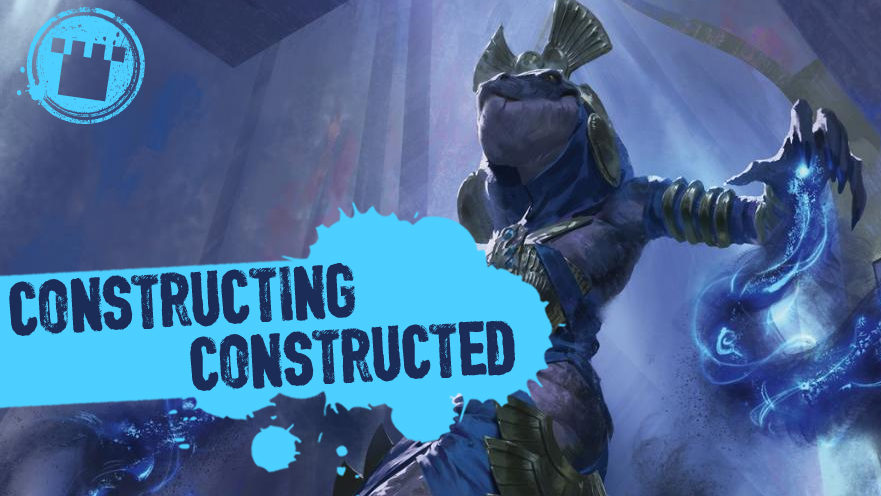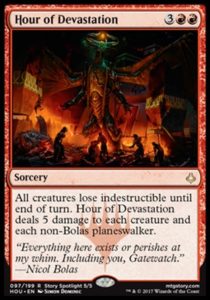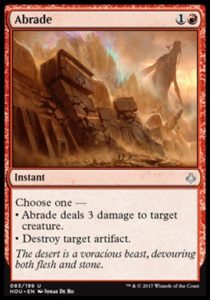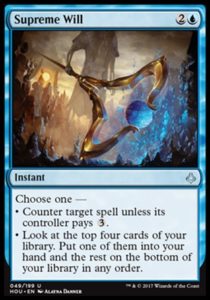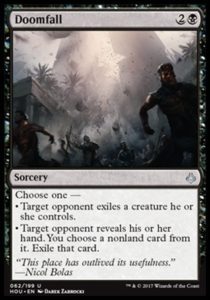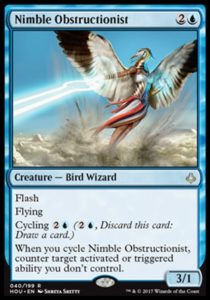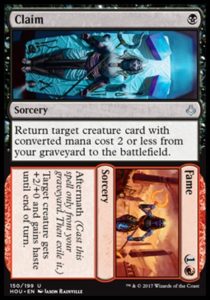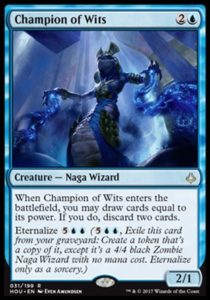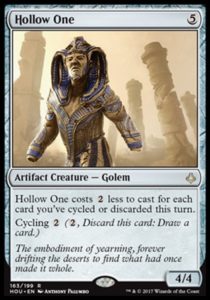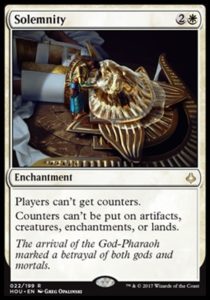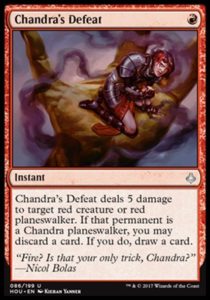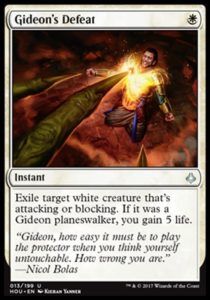With each new set come new cards, ready to make a splash in Constructed formats. Part of the joy of preview season and new set releases is beginning to figure out what cards can slot into existing strategies, what cards can bolster fringe decks, and what cards can facilitate the creation of completely new archetypes! Hour of Devastation has been no different, with cards to slot into both rotating and eternal formats, in sideboards and main decks alike.
Nicol Bolas, God-Pharaoh
Let’s start with the star of the show – Nicol Bolas. While a Grixis or four-color control deck isn’t currently a staple of Standard, Bolas (and a few other cards on our list) could easily propel such a list to Tier One. This finisher starts off with an incredibly high loyalty, and can protect himself by casting opponents’ spells, stripping opponents’ hands, or dealing seven damage directly to the dome or to the largest threat on board. This, accompanied by a lack of instant speed Planeswalker answers (it looks like we’re going to be asking Cast Out to do a lot of work…), makes Bolas one hard-to-deal-with threat.
Hour of Devastation
The namesake card of the set does not fail to disappoint. A sweeper that deals five damage should be enough to kill all but the largest of bodies (even forcing creatures to lose their indestructibility), but the power of this card comes from its ability to deal damage to opponents’ pesky Planeswalkers, such as Standard all-star Gideon, Ally of Zendikar. The fact that this doesn’t hit Nicol Bolas, God-Pharoah is just icing on the cake.
Abrade, Supreme Will, and Doomfall
There’s no doubt in my mind that these three modal cards will quickly become staples of Standard. Abrade is so strong that I think it could see play in Modern, taking up a sideboard slot in decks such as Death’s Shadow, Grixis Control, Burn, and Jund. Supreme Will introduces Mana Leak (albeit for three) back into Standard – with upside. Once the additional three mana becomes irrelevant, this card replaces itself while helping you filter for the answers (or threats) that you need. Finally, Doomfall is the most situationally dependent; you’ll want to cast it at such a time that your opponent doesn’t have good options for which creature to exile. Being able to strip a nonland card from an opponent’s hand gives you options when Doomfall’s first mode might not be ideal.
Nimble Obstructionist
Another card that I could see making a splash in both Standard and Modern, Nimble Obstructionist presents an uncounterable Stifle effect. This could easily encourage Mono-White or G/W Hate Bears players to splash blue so they can turn opposing fetchlands into Strip Mines. At worst, Obstructionist is a 3/1 flyer with flash that can easily trade up or present a decent clock.
Claim//Fame
Speaking of cards that could make a splash in Modern, Claim//Fame has a lot of potential in Death’s Shadow variants. Death’s Shadow decks are notoriously light on creatures, and being able to recur a threat from the graveyard to the battlefield for a single mana has enormous potential. Being able to give your 7/7 Death’s Shadow +2/+0 and haste is the cherry on the top. The interplay with this card and Snapcaster Mage can also help the Death’s Shadow player to build their board back up from nothing, or recur answers to opposing threats.
Champion of Wits
Champion of Wits provides a Faithless Looting effect on a 2/1 body – and it only gets better from there if you can Eternalize it. This card easily slots into the U/R and Grixis Emerge decks that have long been Tier Two in Standard. Champion will help get Prized Amalgams into your yard and protect your life total while you set up for some big swings later in the game.
Hollow One
A 4/4 that you can cast for one mana (or less!) is just begging to be broken. Not only would this card slot easily into U/R and Grixis Emerge in Standard, but it can also easily be included in Modern Living End decks. Running this out for one mana after cycling two cards can help you stabilize after fast starts, and it provides a more aggressive start in the face of opposing graveyard hate – a Plan B to Living End’s Plan A. Finally, there’s talk of Hollow One seeing play in Vintage Dredge lists, where a tap of your Bazaar of Baghdad will have you running out the 4/4 for free.
Solemnity
There’s been a lot of buzz about Solemnity since it was revealed, and for good reason – the card provides a unique effect that can combo with anything from Phyrexian Unlife in Modern to Dark Depths in Legacy. It can act as a secondary Vizier of Remedies or Melira, Sylvok Outcast in Modern Counters Company decks, and turn off opposing Arcbound Ravagers, Steel Overseers, and even late-game Chalices of the Void. At three mana, it may be too expensive for Modern, but I believe it will find a home there somehow.
Liliana’s Defeat, Chandra’s Defeat, and Gideon’s Defeat
While the Defeats will likely be relegated to Standard sideboard slots, they have the potential to swing games. Chandra’s Defeat provides the most utility as a one-mana answer to an opposing Glorybringer or Chandra, Torch of Defiance. While Gideon’s Defeat is also an instant, it more or less forces you to wait for your opponent to swing in with Gideon, Ally of Zendikar (and conspicuously leave up a single white mana), but it’s still a clean answer to a prevalent Planeswalker. Liliana’s Defeat is the least impressive of the bunch – a black sorcery in a format where Fatal Push is legal – but its ability to answer opposing black Planeswalkers (I’m looking at you, Nicol Bolas) makes it important tech for any mirror match.
With so many options for Standard and beyond, I’m sure there are playables that I’ve missed. One thing is for certain – I’ve got some playtesting to do.
Header design: Justin Treadway
Header image: “Champion of Wits” by Even Amundsen

A Spike at heart, Chantelle spends her free time prepping for tournaments, working toward the ever-elusive Mythic Championship, and championing other competitive ladies. She’s a combo aficionado and seasoned aggro deck player, and Standard and Modern are her preferred formats. Growing and improving as a player, both technically and in her mental game, are of the utmost importance to her.

